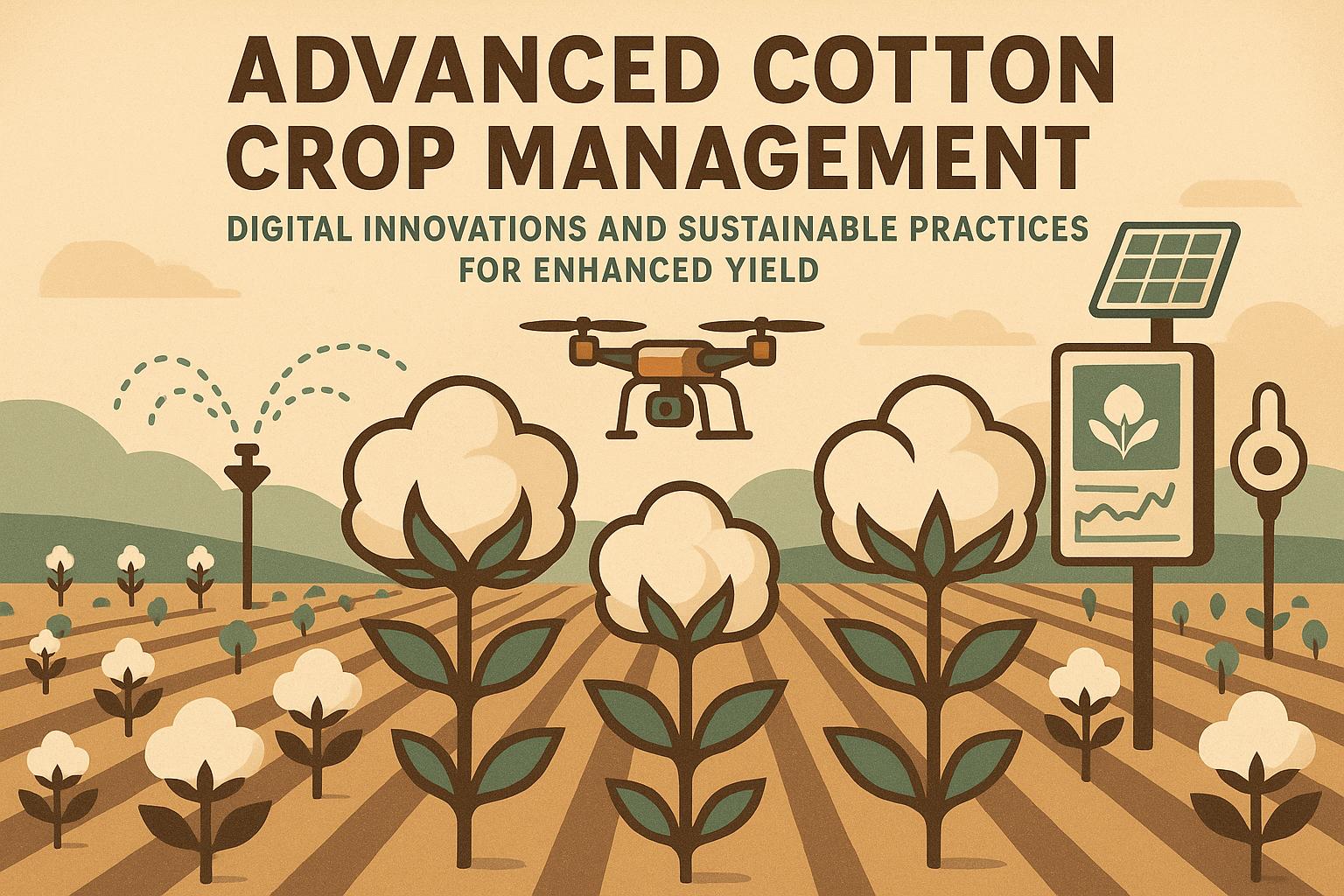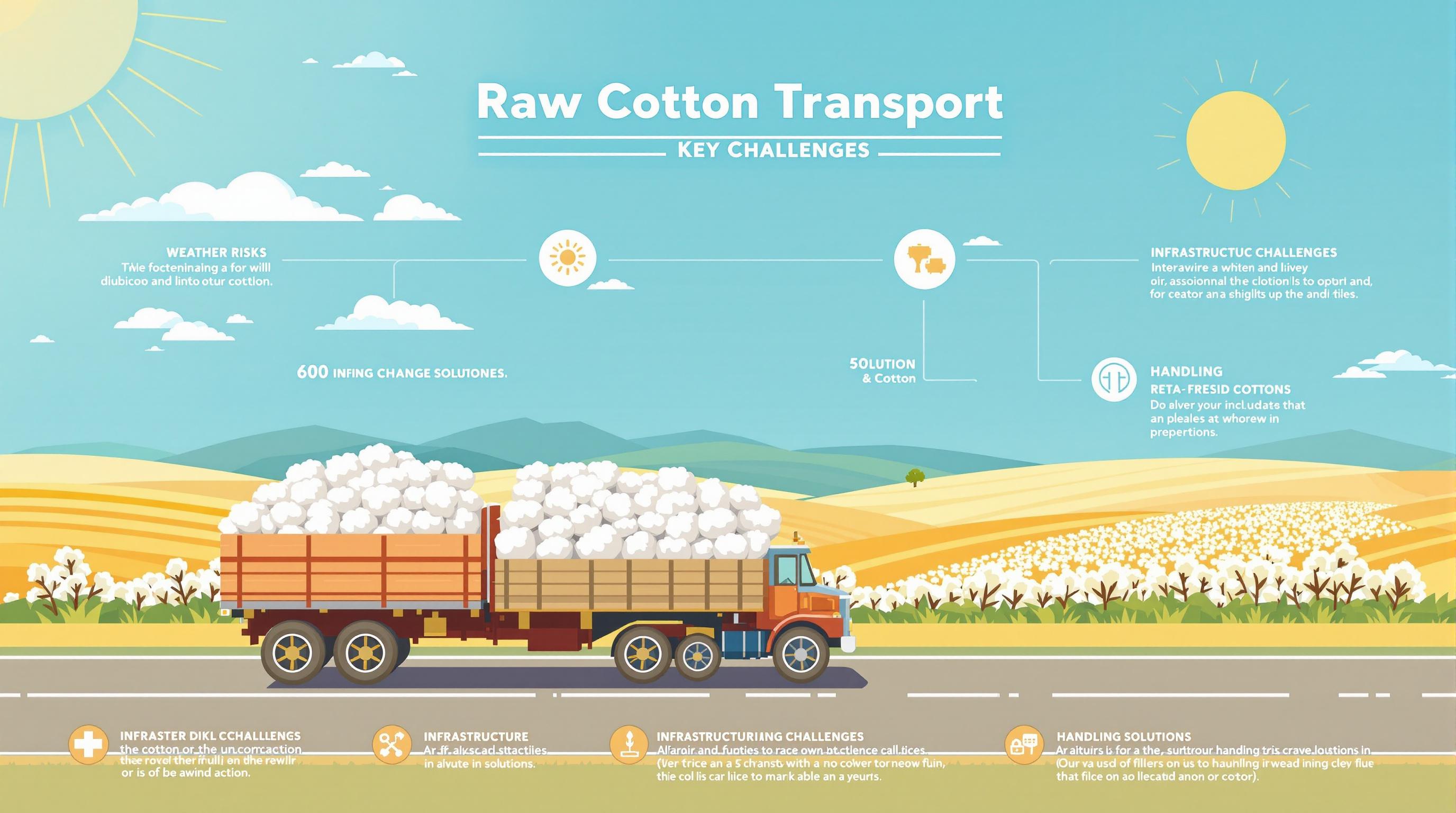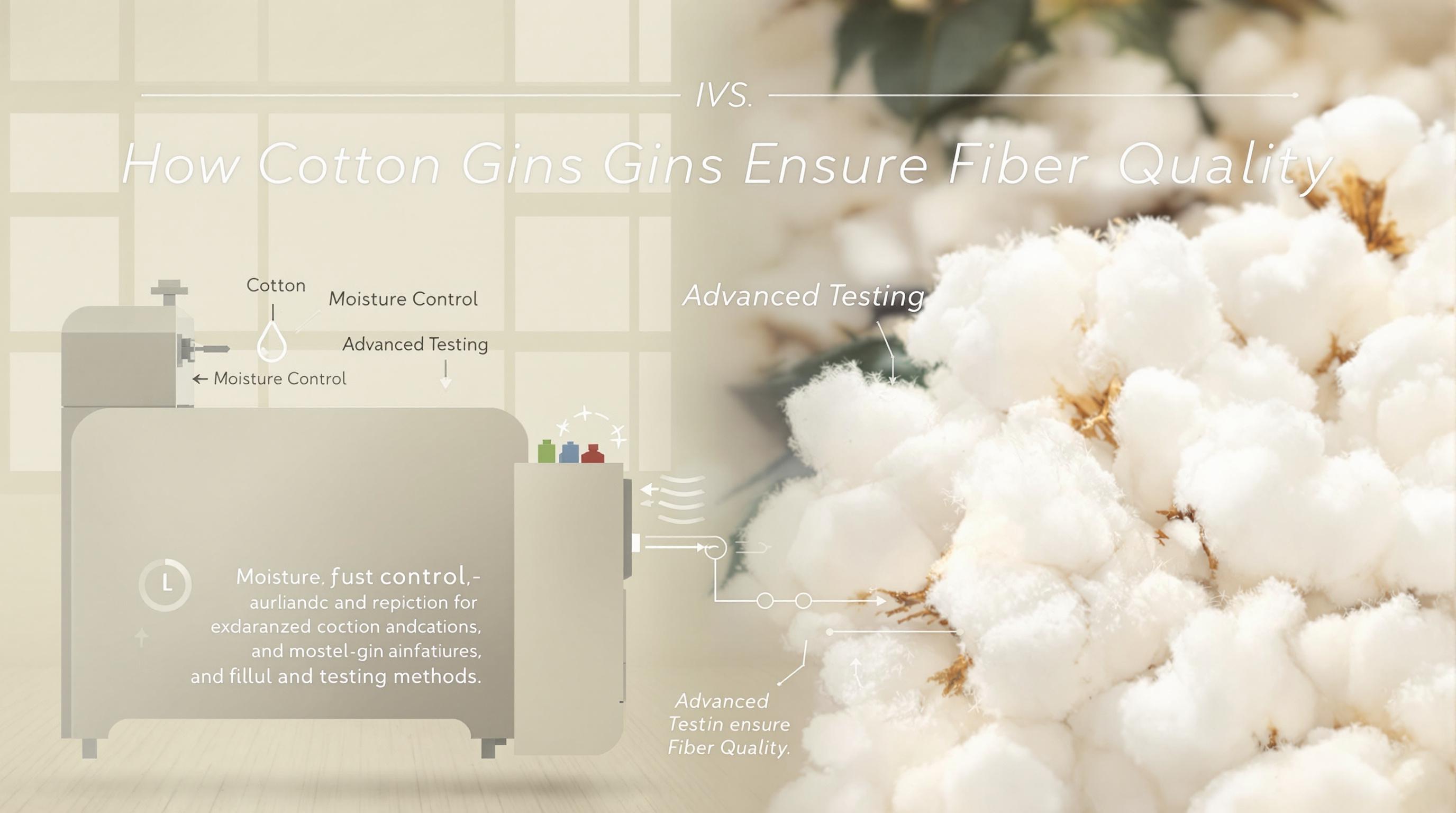Executive summary (TL;DR)
- Diversify with non-agricultural investments for farmers, like stocks or real estate—hedges cotton volatility, providing 10-15% stable returns to cushion low-price years without diverting from core farming.
- Explore retirement accounts and bonds; offer tax advantages and low-risk growth, building wealth for succession while freeing cash for farm upgrades like precision tech.
- Start small with index funds or local business ventures; this reduces risk exposure from weather/markets, ensuring long-term stability for multi-generation cotton operations.
Related Post: For broader diversification ideas, check out our post on Cost Reduction Strategies in Cotton Farming.
Good years turn bad on a dime—prices tank, rains fail, and suddenly you're scraping to cover inputs. That's when non-agricultural investments for farmers become your lifeline, a way to build buffers without selling the farm. You don't abandon the rows; you strengthen them by spreading risk, turning spare capital into steady streams that pay when cotton doesn't. For growers with years of navigating basis and bales, this is about smart money moves that keep your operation resilient, family secure, and ready for whatever the market throws.
We're focusing on practical off-farm options here, assuming you've got your hedges and co-op basics solid. This expands on the need for non-ag diversification, backed by data from USDA reports, financial ag extension like that from Texas A&M, and farmer surveys from Cotton Incorporated. I'll pull from those, share strategies that have worked for diversified ops, and give you the framework to start without big risks. No get-rich schemes, just the investments that complement cotton farming.
Why Cotton Farmers Need Non-Agricultural Investments
Cotton farming is rewarding but volatile—prices swing 20-50% yearly, weather wipes 10-30% yields, inputs rise 5-10% annually, USDA stats show. Relying solely on ag exposes you to cycles that can bankrupt even strong ops. Non-agricultural investments for farmers spread that risk, providing a stable income to weather lows.
Benefits: Diversification cushions—off-farm returns average 7-10% in balanced portfolios, covering 15-25% farm expenses in bad years, per Farm Credit reports. It builds wealth for succession, retirement, or expansions like precision tech. A Delta farmer I know used investment dividends to buy drone scouting gear, upping yields 8% while off-farm cushioned a flood year.
Economic reality: Cotton net returns $100-300/acre in good years, but negatives in bad—non-ag averages positive, stabilizing cash flow.
Off-topic: Business tool—use apps like Mint to track investments alongside farm books; spots tax savings tied to ag depreciation.
Stocks and Mutual Funds: Building Equity Outside the Field
Stocks offer growth without land ties—S&P 500 averages 7-10% annual post-inflation, far steadier than cotton's 5-15% volatility.
For farmers: Index funds like Vanguard VTI diversify across sectors, with low fees (0.03%). Allocate 20-30% savings; $10K yearly grows to $200K in 20 years at 8%.
Ag angle: Farm-friendly—dividends pay inputs; capital gains tax-deferred in IRAs. Purdue extension: Farmers with stock portfolios weather price dips 20% better.
Strategies:
- Dollar-cost average: Invest fixed amounts monthly, buying low in slumps.
- Dividend stocks: Utilities or consumer goods yield 3-4%, steady like subsidies.
- Avoid spec: Stick 80% indexes, 20% ag-related like Deere for familiarity.
Risk: Market drops 10-20% short-term; balance with bonds for stability.
Pro tip: Roth IRA for tax-free growth—contribute post-tax farm income, withdraw retirement free.
Real Estate: Tangible Assets Beyond Farmland
Real estate provides rental income, appreciation—averages 3-5% rent yield + 4-6% value growth, NAR data.
Why for cotton farmers: Familiar asset class; diversify from ag land values tied to commodities. Rental properties cash flow $500-1,000/month/unit, covering farm loans.
Types:
- Residential: Houses/apartments near towns; steady tenants from ag workers.
- Commercial: Storage units for equipment—low maintenance, 6-8% returns.
- REITs: Real estate trusts like VNQ; liquid, 4% dividends without management.
Texas A&M ag finance: Farmers with real estate see 15% portfolio stability vs. ag-only.
Start: Buy local; leverage farm equity for down payments. $100K property at 20% down, 4% rate—builds equity fast.
Challenge: Maintenance; use managers for 10% fee if hands-off.
Off-topic: Market strategy—rent to cotton-related businesses like seed suppliers for synergies.
Bonds and Fixed Income: Safe Havens for Steady Cash
Bonds offer predictability—U.S. Treasuries yield 2-4%, corporate 4-6%, low risk.
For farmers: Cash reserves for off-years; ladders mature staggered for liquidity. $50K in bonds generates $2K/year interest, covering insurance or repairs.
Benefits: Tax-free municipals for state bonds; offsets farm taxes. Fed data: Bonds balance stock volatility, stabilizing returns 10-15%.
Approach:
- TreasuryDirect: Buy direct, no fees.
- Bond funds: ETFs like BND for diversification.
- CDs: Bank rates 3-5%, FDIC safe.
Purdue: Ag ops with 20-30% bonds weather downturns 25% better.
Pro tip: Match maturities to farm cycles—short-term for input buys.
Retirement Accounts: Long-Term Wealth Builders
IRAs/401(k)s grow tax-advantaged—Roth for post-tax contributions, traditional for deductions.
Why essential: Farmers often lack employer plans; self-fund for retirement. At 7% return, $5K/year from 40 grows to $500K by 65.
Ag twist: SEP-IRA for self-employed; contribute up to 25% income, tax-deductible.
Fidelity data: Consistent contributions yield 15-20% more wealth vs. sporadic.
Start: Max Roth ($7K/year); invest in index funds.
Challenge: Withdrawal rules; plan for 59.5 age.
Alternative Investments: Diversifying Beyond Traditional
Crowdfunded real estate (Fundrise) or peer-lending (LendingClub) yield 5-8%, low entry $1K.
For farmers: Commodities ETFs hedge cotton prices—gold or oil counter ag dips.
Angel investing: Local ag-tech startups; 10-20% returns if it hits.
Harvard Business Review: Alternatives add 5-10% portfolio resilience.
Risk: Illiquid; allocate 5-10%.
Pro tip: Use robo-advisors like Betterment for auto-balance.
Precious Metals and Commodities: Hedge Against Inflation
Gold/silver hold value—averages 5-7% long-term, kitco data.
Why for cotton: Inflates with inputs; metals counter, preserving buying power.
Approach: ETFs like GLD; physical for tangibility.
Ag link: Commodities like corn futures complement, but stick to non-ag for true diversity.
Challenge: No income; for preservation, not growth.
Cryptocurrency and Digital Assets: High-Risk, High-Reward
Bitcoin averages 100%+ yearly but volatile—use for 1-5% portfolio.
For farmers: Blockchain ag-tools emerging; crypto as hedge.
Coinbase: Diversifies from commodity cycles.
Risk: Drops 50%+; research thoroughly.
Pro tip: Stablecoins for low-vol yield 4-6%.
Business Ventures: Leveraging Ag Skills Off-Farm
Consulting, custom farming, or ag-supply side business—leverage expertise for 20-30% returns.
Examples: Seed sales, equipment rental, or online farm courses.
SBA data: Side ventures add 15-25% income for farmers.
Start: Low-capital like consulting; scale with profits.
Off-topic: Market strategy—use ventures for networking; secures better cotton contracts.
Real Estate Investment Trusts (REITs): Passive Property Plays
REITs yield 4-6% dividends, appreciation—VNQ ETF for diversification.
Why: No management; liquid like stocks.
Nareit: Outperforms inflation 2-3%.
For farmers: Ag-REITs like farmland trusts tie back, but non-ag for true diversity.
Peer-to-Peer Lending: Steady Income Streams
Platforms like Prosper yield 5-9% on loans.
For farmers: Set-it-forget; $2K min.
Risk: Defaults; diversify borrowers.
LendingClub: Average 6% net.
Annuities: Guaranteed Income for Retirement
Fixed annuities pay 3-5% lifetime.
Why: Supplements Social Security; tax-deferred.
Insurance Journal: Stability for volatile incomes.
For cotton: Lump-sum from good year funds, steady payouts.
Challenge: Illiquid; for long-term.
Education and Skills Investments: Human Capital Diversification
Courses in finance or tech—online MBAs yield 20% career ROI.
For farmers: Ag-business certs open consulting.
Coursera data: Skills boost income 15%.
Pro tip: Free resources like Khan Academy for basics.
Tax Considerations in Non-Ag Investments
Roth for tax-free; 1031 exchanges for real estate defer gains.
IRS: Farm losses offset investment income.
Consult pros; saves 10-20% taxes.
Risk Management: Balancing the Portfolio
Allocate 60% stocks, 30% bonds, 10% alts—Vanguard model for moderate risk.
Rebalance yearly; diversify sectors.
Morningstar: Balanced portfolios return 7-9%, 20% less vol than ag-only.
For cotton: Non-ag covers 15-25% farm risks.
Case Studies: Farmers Who Diversified Successfully
A Texas grower invested in REITs; dividends covered drought losses, farm intact.
Southeast family: Stock portfolio funded expansion, yields up 10%.
Midwest: Real estate rentals provided steady cash, weathering price dips.
Common Pitfalls: Overreach, Timing Errors
Don't be all-in one asset; diversify within non-ag.
Avoid chase highs; dollar-cost.
Seek advisors familiar with ag.
Building Your Non-Ag Portfolio: Step-by-Step
- Assess cash flow: 6 months emergency first.
- Set goals: Retirement or expansion?
- Educate: Books like "Rich Dad" for basics.
- Start small: $5K index fund.
- Review annually: Adjust for farm needs.
Financial Peace University: Structured plans up success 25%.
The Cotton Connection: How Non-Ag Strengthens Farming
Non-ag frees capital for farm innovations like drones, up efficiency 10%.
Stable income lets you hold cotton for better prices, adding 5 cents/lb.
Family legacy: Wealth beyond land for heirs.
A grower diversified into bonds; funded pivot upgrades, and yields rose 15%.
Wrapping the Diversification Case
Non-agricultural investments for farmers aren't a departure—they're the support that lets cotton thrive. Spread risk, build wealth, and keep farming the heart while securing the future.
Actionable Takeaways
- Build an emergency fund; start an index fund $5K for 7-10% growth.
- Invest in REITs for a 4-6% yield; low management.
- Use a Roth IRA; contribute yearly for tax-free retirement.
- Diversify 60/30/10; review with ag advisor annually.


